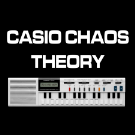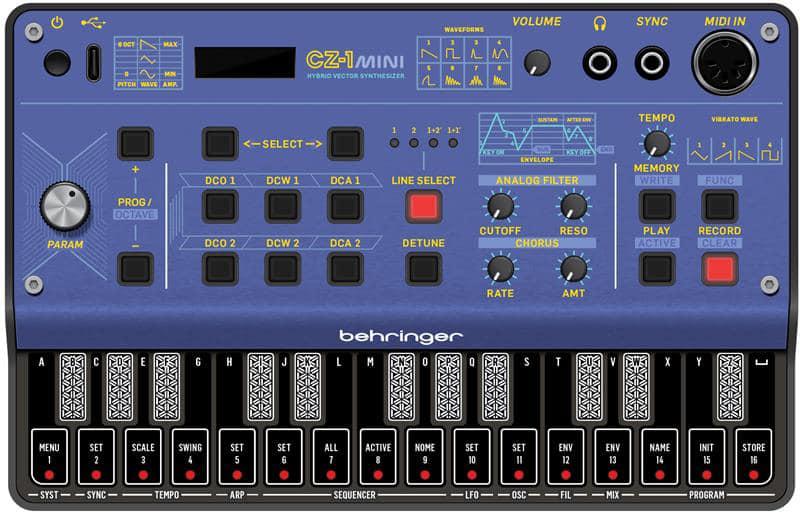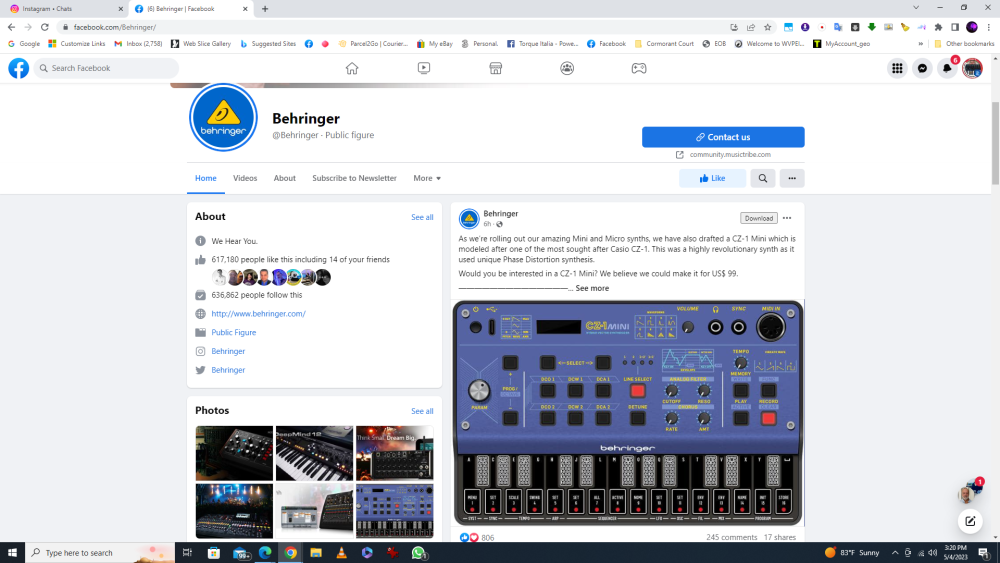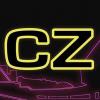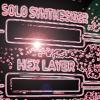Search the Community
Showing results for tags 'cz'.
-
For years Casio CZ fans have been calling out for a modern re-issue of the CZ Phase Distortion synthesizer series. Could our prayers be about to be answered by Behringer? And they should call it a "BZ-1"!!! Here's the announcement on the Behringer Facebook page:
-
Sorry if this is a bit spammy, but I've created a new patch editor for the CZ series and CT-6500. It's for WIndows 10 and is in the store, but is completely free and completely ad free. Also does not capture any user info at all. It's just a patch editor. It's called VZV CZ. Did I say it's free? As I said it supports the classic CZ series and also the preset CT-6500 which, although you cannot save any presets, accepts the usual Sysex so you can edit the "live" patch in the edit buffer and save virtual banks of patches in VZV CZ which you can then load into the synth with a click or tap. I've attempted to make an interface which is touch friendly for us with tablets which are more convenient to carry around than a desktop machine I actually wrote this because I have a CT-6500 and finally worked out how to edit the sounds and couldn't then find a really up to date Windows patch editor. Here's the store link- https://www.microsoft.com/store/productId/9NBT2LCQV3NQ If that doesn't work, just search VZV CZ in the Windows Store and it should pop up. There's two known issues I only spotted after the latest upload (typical); more than one rtpMIDI network channel can crash it on startup and it doesn't disconnect from an input if you switch to another one. I have fixes for them done already but it would be nice if some CZ series users would try it out and report anything else before the next bugfix release since each release in the Store has to be approved so it takes a while. If anyone out there is kind enough to give it a try, you can report any feedback or bugs here or to support@veezeevee.net Thanks for reading!
-
Hello people, Ive had my CZ 5000 for a good few years now and am trying to work out what is going wrong with the stereo chorus slider. Whenever i adjust the level with the fader, I get a really horrible, loud distortion, which overpowers the entire signal and pumps the overal volume ridicoulsly loud. It is also very crackly when moving the slider and is compltely unusable. I have to find a spot on the the fader, and that could be anywhere (random) to have the distortion sound turn off. I have noticed also (using headphones) that the signal is slightly panned to the right, is this normal? perhaps this is related to the stereo chorus issue? Has anyone experienced this before with the cz-5000? any help would be much appreciated!
-
Hello all, I am new to this forum, and have been searching around for someone with more experience with Casio CZ-101 troubles. Have had this synth for quite a few years, and I love it so much! I finally got around to doing some updates, like a backlit LCD. Then I moved on to building a 64 patch memory card, which is mentioned in the article down this page: http://www.vintagesynth.com/forum/viewtopic.php?f=1&t=59847 I have it constructed, only using 1k ohm resistors in the place of the 390 ohms, just because I had them on hand. I have made sure it is all connected properly and there is continuity between the cartridge pins in the Casio and the card. Whenever the card is connected to the synth, and I power it up, there is just a row of boxes on the LCD top row, and many of the LED's are lit up, but no functions are available on the keyboard. If I turn it off and remove the cartridge, everything works fine again. I guess I'm just wondering if anyone here has experienced this with a CZ... as I noticed one person on another forum stating they had this problem before, but did not mention ram cartridges or any solutions. If anyone has more understanding here, would the current limiting of the higher value resistors cause the card to be unusable, or is there a deeper problem with the cartridge circuitry within the keyboard itself? Any help or suggestions would be greatly appreciated! Thank you, Pat(Spivkurl)
- 15 replies
-
- Memory
- Phase Distortion
- (and 4 more)
-
I'm doing such a happy dance tonight. I picked up an old CZ-230S a few weeks ago, simply because I thought it would be fun to have a light and combined version of the CZ, RZ and SZ. I bought it knowing that it was "preprogrammed" with 100 non-editable tones, but what I'd seen on the web and in the user guide about tones 96-99 being able to be edited using an external computer intrigued me. I tried a bunch of things this week, but so much of the software is out of date and/or not compatible with my MacBook. One small application (CZ Editor, I think) was written just a few years ago specifically for the Mac and the 230S, but I can't seem to get it to run. Anyway, I remember that the guy at Coffeeshopped who did the CZ Touch editor for iPad had also done a standalone Mac application called Casio CZ-101 Patch Editor, but that he wasn't sure if it would work with the CZ-1 or the 230S. I decided to give it a shot anyway, and after about an hour fiddling, I cracked the secret formula. It doesn't help that the 230S is so weird with its MIDI settings, and that the manual for it is such a mess. But in the end, something I read in it about powering it on while holding the Solo button made me realize that that was putting the 230S into another mode for MIDI. I did that, assigned tones 96-99 to MIDI channels 1-4. I fired up the 101 Patch Editor and started fiddling. Eventually I discovered (stumbled upon, really) that as long as Tone 96 ("Computer Game") was on Channel 1, and if the program was looking at Channel 1, it could retrieve and send messages to the keyboard. 97-99 wouldn't work, and neither would the other channels. Just click a preset and it loaded. And the 230S even retains it after powering it down. Then I thought, "Well he must have structured the CZ Touch app in a similar way, let's try that." Sure enough, as long as I followed my rules, it worked. It was even easier to test because you can send a note from the app to the keyboard, and instantly hear the new tone. A small victory to be sure, but a fun experience. And I'm going to see if I can get the other 3 writable as well, since there doesn't seem to be any reason that 96 would work, but not 97-99. And the other nice thing is how instant the feedback is with the CZ Touch. You edit the tones very visually, and by hitting "random" you can get some really extreme, almost circuit bending -like sounds with it. And I haven't even tried it with my 101 or 1000 yet. Anyway, just wanted to share it with some of the only people in the world who would care. I'll update if I find out more, and I'm going to try to make time to do a YouTube video tutorial showing both processes as well.
-
Hi guys, I'm new to hardware synths as I've just purchased a CZ-5000 of eBay. I love it! BUT I can send patches to it using Midi-Ox but I can't figure out how save the patch to the synth. Is this possible? I can tweak the synth's original preset patches and save them in the user memory slots but can't seem to save patches loaded to the synth externally. Any help appreciated!
-
Triangular wave modulation (US patent 5164530) is an FM-like Casio speciality that generates waveforms by modulating a monotonous carrier function with a sine (or other) wave and decoding the signal by mirroring it at a triangular wave. With the same count of operators (here only 2?) the produced waveform has higher harmonics than normal FM because at high modulation the wave peaks fold back into the opposite direction. Without modulation it outputs a sine wave and so can nicely blend between very dull and bright timbres. The carrier waveform stands in ROM and so can be switched between a variety of timbres. Like with FM, operators can be combined in various ways. https://www.google.com/patents/US5164530 - Is TM part of the "phase distortion" engine or something else? I own a CZ-230S and revived a CZ-101 (had severe water and fire damage), but I am no PD expert and never heard about TM synthesis before (even websearch doesn't help much). Is this used in phase distortion synths (e.g. the later VZ-series) or is this only used in the Casio "Pulse Code Modulation" engine of preset sound keyboards? Patent 5164530 suggests that Casio at least planned to make dedicated TM synthesizers with a PD/FM-like user interface. I am reworking my technical keyboard descriptions for the WarrantyVoid site. So I websearched for 1980th keyboard patents and discovered a lot of interesting info. https://www.google.com/patents/US5319151 This is what I wrote for my SA-series page: The Casio "PCM" sound generation is apparently described quite detailedly in the US patent 5319151; it is based on a highly complex softsynth with many algorithms those can perform PCM, DPCM, FM and TM (triangular wave modulation) synthesis with sophisticated envelopes. This rather confusing 121 page tome of a patent text however is ambiguous, because it covers plenty of different implementations those e.g. can employ different counts of chip-internal sub-CPU cores for sound generation in higher grade instruments. The SA-series is surely the cheapest described "First" or "Second Embodiment" which has none. The algorithms for this version even describe how shorter tasks are stuffed with blank "dummy commands" to keep the timing in sync when different sounds would need different computing time. It works indeed very VCS2600-like - a marvel of freakish realtime programming made from one big loop (plus in "First Embodiment" one timer IRQ to compute waveforms and fill the DAC output FIFO; the "Second" does even this during dummy commands). The interpolation method with that Casio smoothly blends between wavetable sections is described in the US patent 4442745 "Long duration aperiodic musical waveform generator" It plays sections of compacted samples back and forward to implement things like long decaying cymbals. US patent 4958552 explains algorithms how envelope data is extracted from natural instrument recordings and applied on loop samples as a approximated segmented functions. The original envelope may be removed from the stored loop sample by a waveform normalizer (US patent 4691608). Most important is that these chained envelopes can have basically any length and have (unlike e.g. ADSR) no fixed count of steps. Combined with crossfading between adjacent loop samples this permits very flexible sound definition. The US patent 5319151 "Data processing apparatus outputting waveform data in a certain interval" mentions for the "First Embodiment" that the chip size is only 5x5mm, a program word has 28 bits (including lower potion of next address) and these further hardware specs: "With regard to the circuit scale and the operation time of the specific embodiment (PCM sound source system capable of producing eight polyphonic sounds) the control ROM has a size of 112K bits, RAM 445.4K bits and the control data/waveform ROM (for 100 timbres) 508K bits; one machine cycle is about 276 nanoseconds with a maximum number of cycles of the interrupt program when invoked being about 150; and the executing period of the interrupting process (tone output sampling period) is about 47 microseconds." Expressed in KBytes this would mean 55.7KB RAM, 14KB program ROM and 63.5KB sound ROM, which isn't far away from a Commodore C64 with large ROM cartridge. Said CPU speed would be about 3.6 MIPS. Higher grade MIDI keyboards like MT-240, MT-540 or MT-750 certainly have sub-CPU cores for 16 bit sound generation. Their external ROM is 512KB up to 1MB. Interesting is that OKI made a general midi sound IC ML2860 (32 note polyphonic ADPCM) to play high quality ring tones in mobile phones, but the datasheet from 2002 contains a very strange note: "Please appreciate that ML2860 is not offered for musical instrument and toy applications, such as keyboards." This suggests that OKI licensed an efficient sound synthesis engine (possibly even surplus ICs) from Casio keyboards, but had to sign an agreement not to use it in competitive products against Casio. - Does anybody know more about this sound engine?
- 1 reply
-
- 4
-

-
- Triangular Wave Modulation
- Phase Distortion
-
(and 6 more)
Tagged with:
-
File Name: CZ-P1 File Submitter: David File Submitted: 17 Aug 2013 File Category: XW-Synths I created this Solo Synth tone considering a CASIO CZ. This tone is in version XW-P1. Click here to download this file

